@Nilgiri can you tag some Egyptian members so we can know their thoughts. It was also rumored that HAL gave the offer to start a Tejas production line in Egypt if they place orders in significant numbers as per reports during the Dubai showIndia Eyes Global Customers For Its Indigenous Aircraft After Spectacular Debut At Dubai Airshow
The Indian Air Force (IAF) contingent has managed to grab eyeballs at the Dubai Air Show. The indigenous HAL Tejas light combat aircraft and two IAF aerobatics teams — Suryakiran comprising nine Hawk advanced jet trainers (AJTs), and Sarang, with four Dhruv helicopters — presented a spectacular aerial display at the event.
This is the first time that Tejas, developed by the Hindustan Aeronautics Limited (HAL), has showcased its aerial maneuvers in the Gulf nation, according to news agency PTI.
So far, three countries have shown interest in the HAL Tejas — Malaysia, Argentina, and Egypt. The Royal Malaysian Air Force (RMAF), which has plans to buy 18 planes, with an option to add another 18 later, could emerge as the first foreign buyer of Tejas.
According to Malaysian media reports, six bids have been filed for RMAF light combat aircraft (LCA) tender. The MiG-35 from Russia, the L-15 from China, the FA-50 from Korea Aerospace Industries (KAI), the Hurjet from Turkey Aerospace Industries (TAI), and the Leonardo M-346 from Italy are among the bidders.
India’s Tejas LCA showcased its superior flying skills at the Dubai Airshow. (via Twitter)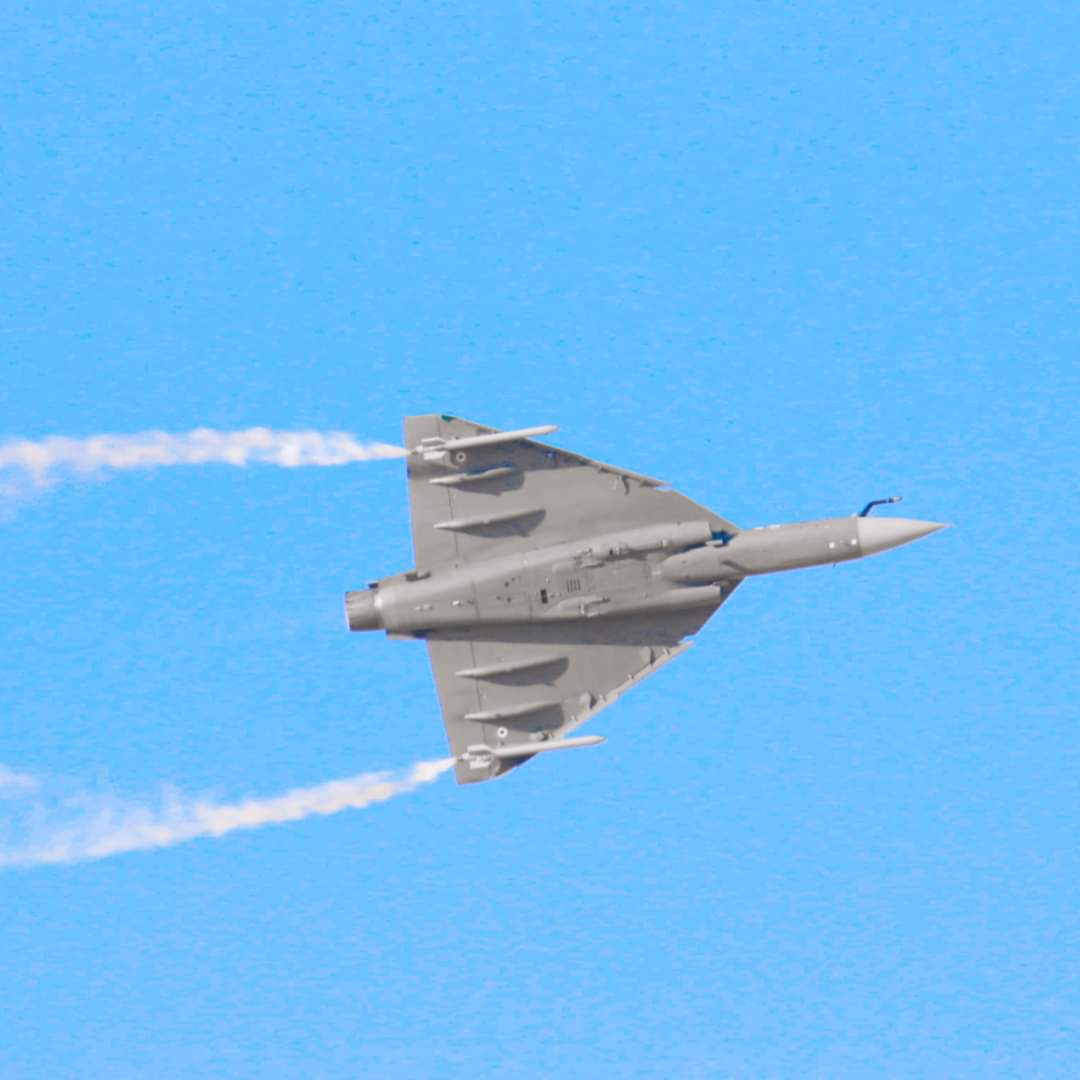
The Pakistani-Chinese JF-17 Thunder, which was initially thought to be among the competitors, was not on the list. The Yakovlev Yak-130 and the Boeing T-7A Red Hawk were also missing.
Mid-air refueling, beyond-visual-range (BVR) combat, and supersonic flying capabilities are among the RMAF’s tender requirements. Moreover, 30% of the aircraft manufacturing must be done in Malaysia, and delivery must start within 36 months of signing the deal.
R. Madhavan, HAL chief, told Business Standard that the company met practically all of the RMAF’s conditions. “The Tejas outperforms the Chinese-Pakistani JF-17 and the other contenders in terms of technology.
“We can easily engineer one or two of the Malaysian parameters that we don’t meet. For example, we can rapidly add the onboard oxygen generating system (OBOGS) that they requested,” Madhavan explained.
The HAL Tejas in Dubai. (via Twitter)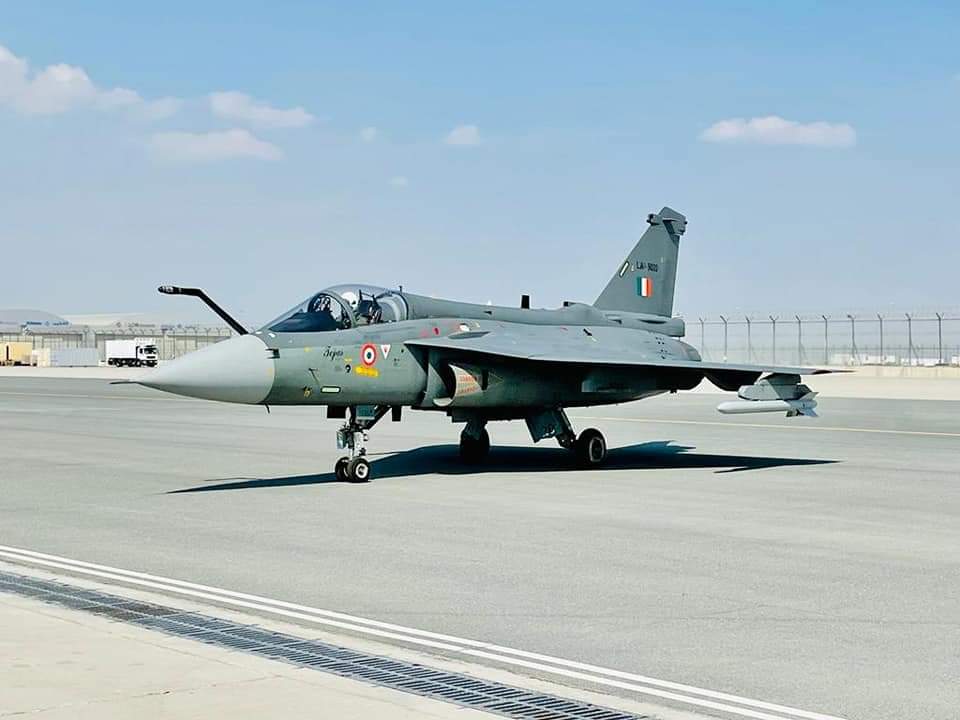
According to the HAL chief, many of the other competitors do not match Malaysian requirements. The Chinese-Pakistani JF-17 lacks the required active electronically scanned array (AESA) radar, and its mid-air refueling capability is currently being evaluated.
Tejas Vs Rest Of Contenders
The Turkish aircraft is yet to take to the skies, but the Malaysian tender requires the offered fighter to have flown beforehand. Hence, Turkey’s chances are low. Then, the Chinese jet is likely to be looked at with suspicion Given Beijing’s aggression in the region.
HAL has pitched the RMAF its Tejas Mark-1A fighter, which features mid-air refueling, an AESA radar, EW capability, and the capacity to shoot BVR missiles.
The Chinese L-15 is one of the contenders for the Malaysian deal.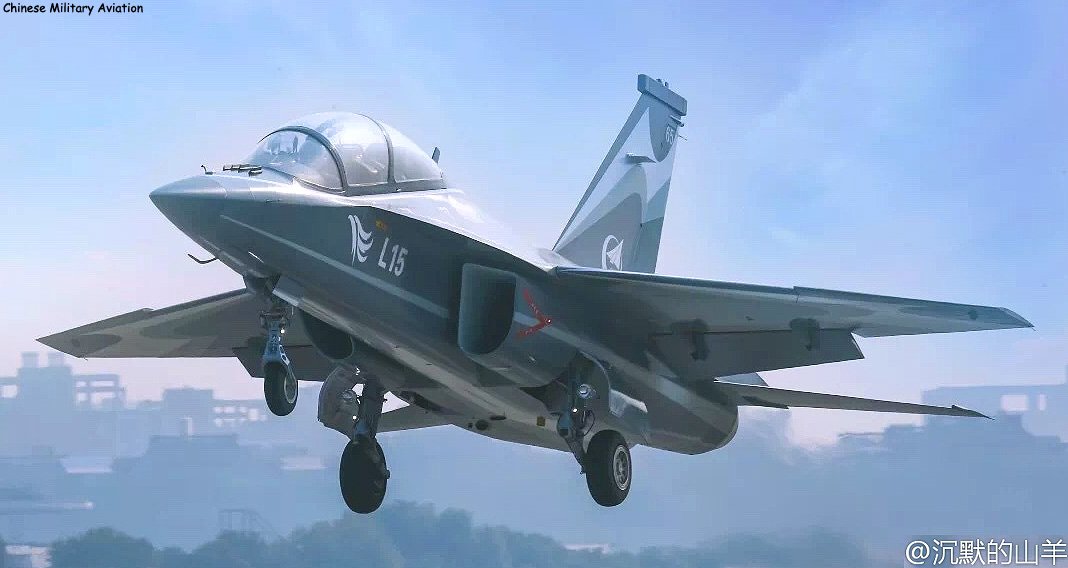
For the RMAF, price is a major factor, anticipating to pay in the region of $900 million for 18 fighters, or $50 million each fighter. According to reports, the Tejas is being offered at that price.
The Korean fighter is expected to be costlier than the Tejas and the Russian MiG-35 is even more expensive than the price mentioned.
The Korean FA-50 LCA. (Wikipedia)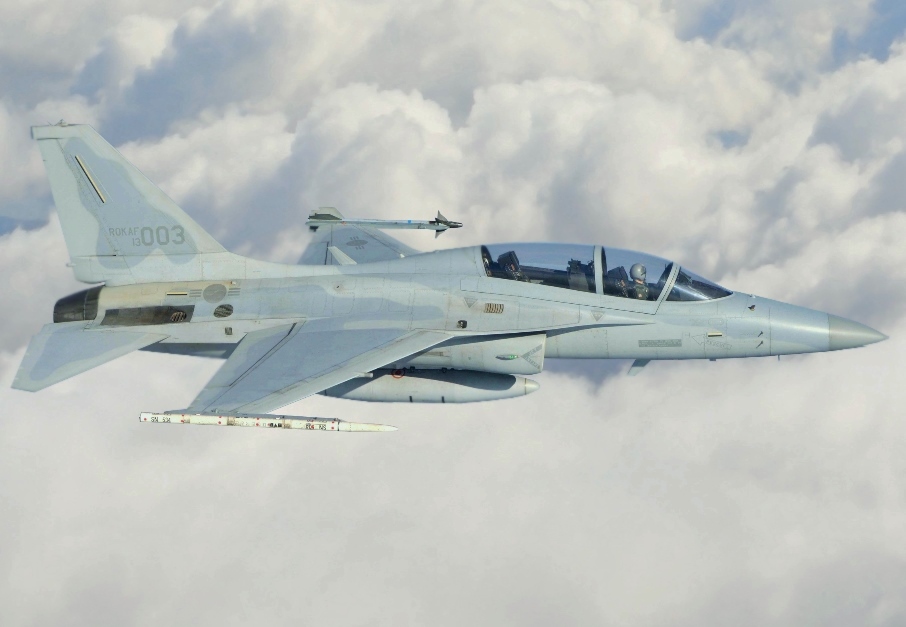
Apart from Malaysia, a few more countries have shown interest in the Indian Tejas LCA.
Argentina
Buenos Aires is looking for 12 light fighters. The matter is being pursued by HAL, but there is a UK embargo on the export of British defense equipment to Argentina that dates back to the Falklands War.
Tejas incorporates several British-made components; hence there might be an export hurdle. Previously, the UK blocked the sale of South Korean fighter jets to Argentina.
https://eurasiantimes.com/jf-17-indias-hal-tejas-favourite-to-win-malaysian-military-aircraft/
So far, Argentina is believed to have received only two proposals for its light fighter jet contract — one from China and a letter of intent from India’s HAL.
Several systems and subsystems of the Tejas, which are made in the United Kingdom by companies including BAE Systems, Cobham, and Martin-Baker will need to be replaced by HAL to make the fighter jet eligible for export.
Madhavan earlier said more than 50 systems and subsystems, including the Martin-Baker ejection seat, will have to be replaced. Furthermore, the replacement parts will need to be tested and certified. He further stated that there will be a cost attached to it.
Egypt
Egypt had been rumored to be interested in the Tejas since the Bahrain air show 2018. Another reason for the Tejas’ appearance at the Dubai Air Show is to gauge interest in the region. However, weaning Cairo off US platforms, which Washington has long provided at subsidized rates, will be a big challenge.
“It’s for the reason that we’re heading to Egypt. The plan is to build Tejas there by establishing a factory,” Madhavan said.
Dassault Alpha Jet E in flight. Egypt wants to replace its aging Alpha Jet fleet.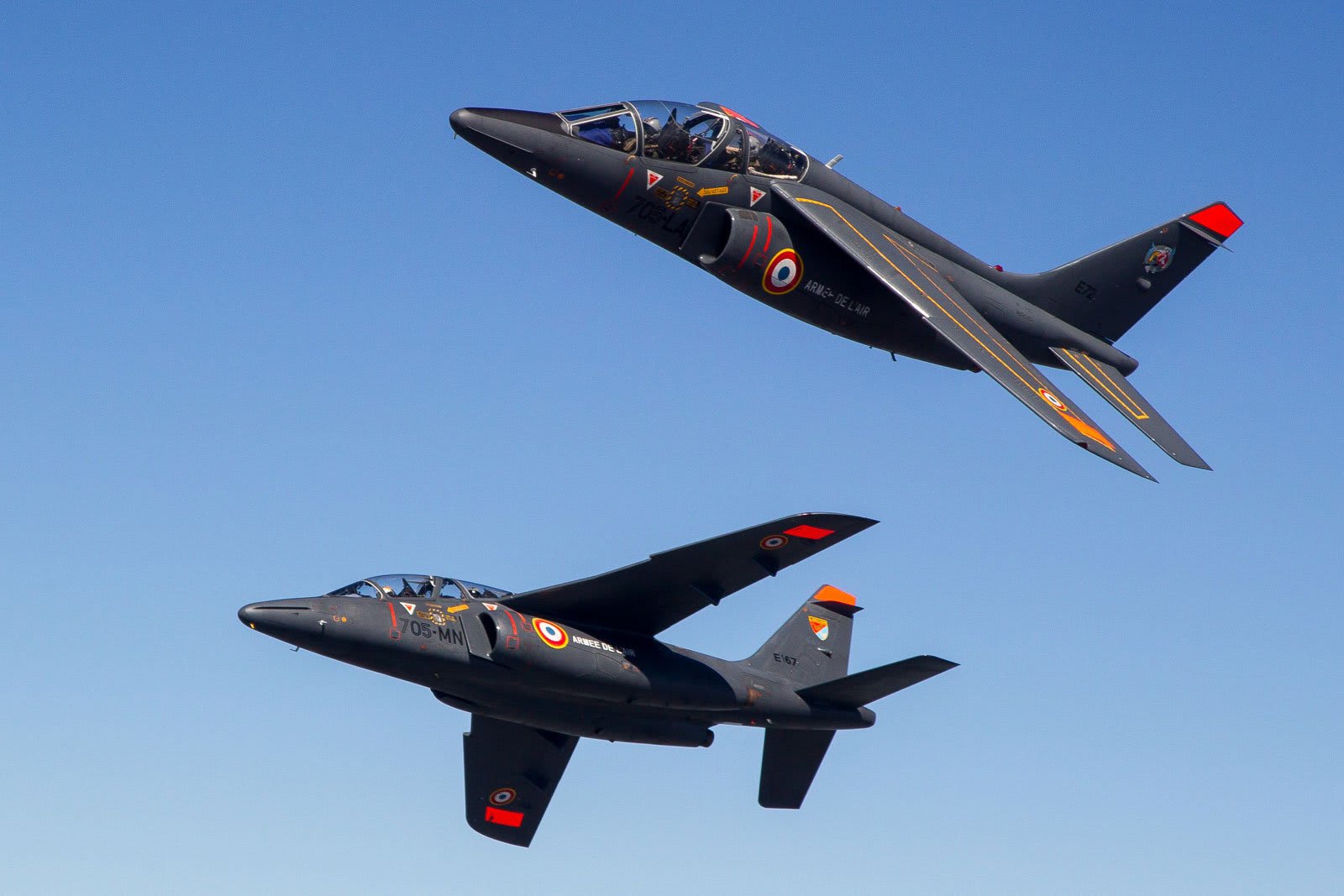
The Egyptian Air Force is considering replacing its aging Dassault/Dornier Alpha aircraft, which was purchased in the 1980s and is nearing the end of its lifespan. The EAF seeks a full-fledged combat aircraft that may also be used for pilot training on occasions.
The service has recently purchased the Sukhoi-35 and Dassault Rafale. The EAF also operates the F-16, Mirage-2000, and Mirage-III aircraft.
Australia
As reported earlier by Eurasian Times, HAL claimed that it has proposed Tejas as a Lead-In Flight Trainer to the Royal Australian Air Force (RAAF).
An Australian Hawk MK-127 LIFT. (Wikipedia)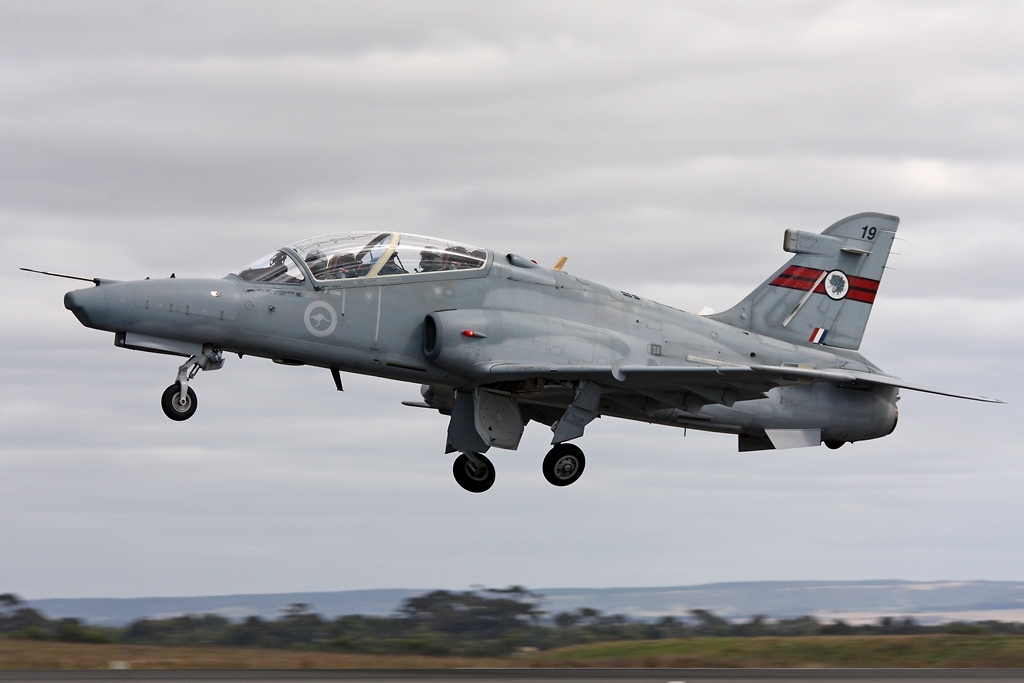
According to HAL’s annual report, the Royal Australian Air Force (RAAF) issued a Request for Information (RFI) for a trainer aircraft in July of last year, to which HAL has already responded. The RAAF trainer fleet now consists of roughly 30 ‘Hawk MK-127’ LIFT aircraft that have been in service since 2001.
Sri Lanka
Sri Lanka has a small air force with only a few aircraft. During the civil war, these fighters were primarily responsible for bombing insurgents. Sri Lanka has already turned down Pakistan’s offer of the JF 17 Thunder and is believed to have shown interest in the Indian Tejas.
Tejas makes use of more efficient technology and has an American engine. As a result, it will be less expensive to operate than Russian platforms that require a lot of maintenance or platforms that employ Russian engines.
However, it’s unlikely that Sri Lanka, which is currently experiencing economic hardship, would like to spend funds on military hardware. Besides, the island nation does not face any major threat from any of its neighbors, and hence, its air force would have to manage with its existing fleet of aircraft.
You are using an out of date browser. It may not display this or other websites correctly.
You should upgrade or use an alternative browser.
You should upgrade or use an alternative browser.
India HAL Tejas Program
- Thread starter Rajendra Chola
- Start date
@Nilgiri can you tag some Egyptian members so we can know their thoughts. It was also rumored that HAL gave the offer to start a Tejas production line in Egypt if they place orders in significant numbers as per reports during the Dubai show
They have been absent for a while from the forum (from what I can tell) after earlier spate of some activity with @Gamal @ANGMAR et al.
Let me tag @Philip the Arab for any summary on anything he may have heard from gomig and TheSC etc.
Hm......@Nilgiri can you tag some Egyptian members so we can know their thoughts. It was also rumored that HAL gave the offer to start a Tejas production line in Egypt if they place orders in significant numbers as per reports during the Dubai show
Have you guys not even (for once) wondered why such a lucrative deal with Egypt havent been signed yet till now from 2018?
Do you really believe that France will accept watching Egypt, which is France's top weapon buyer, to have a fighter jet production line in Egypt and from another country on top of that?
If you guys truly believe that France will just sit quietly and watch its top money bank movey away to India; then you guys must be high or something (no offense though)
As for malaysia, dont underestimate the Hurjet deal. While the Hurjet certainly hasnt flown yet, The Turkish deal aims to incorporate Malaysia as a partner; thus, Malaysia may be able to be self-suffecient in production of trainer and light aircraft variants in the long term; in addition to obtaining fighter jet technology
Hm......
Have you guys not even (for once) wondered why such a lucrative deal with Egypt havent been signed yet till now from 2018?
Do you really believe that France will accept watching Egypt, which is France's top weapon buyer, to have a fighter jet production line in Egypt and from another country on top of that?
If you guys truly believe that France will just sit quietly and watch its top money bank movey away to India; then you guys must be high or something (no offense though)
As for malaysia, dont underestimate the Hurjet deal. While the Hurjet certainly hasnt flown yet, The Turkish deal aims to incorporate Malaysia as a partner; thus, Malaysia may be able to be self-suffecient in production of trainer and light aircraft variants in the long term; in addition to obtaining fighter jet technology
If you do good things and you advance well in all fronts.
These contracts ultimately are part of bigger picture....including our own deep and growing strategic partnership with France.
It is important for India to focus primarily on such things as:
Keeping its inflation rate consistently under 5% like it is currently doing.
We certainly don't want double digit inflation or anything close to that for example.
Build its forex level from 600 billion to 1 trillion.
Increase exports from 600 billion level to 1 trillion same way.
Build its saving and investment rate from the current 1 trillion level to 2 and then 3 trillion USD.
Maintain and improve its investment grade credit rating. We certainly dont want junk grade stuff here.
These all matter in the end to charting and sustaining our industrial and thus military development and production (which is a smaller subset).
Compared to that, peeling away X country from current Y country buying is just idle speculation....good if it happens, but not really important if it doesn't. But the fact the convo is there unlike before already shows early trend for later.
Just like all the idle chat that was going on about ISRO during the 80s and 90s about who will eventually buy launch services from India in the future....and they really have been muted now...if they dont want to seem stupid that is anyway.
Expanding that to every domain broadly is name of the game here for India.
=================================
As for Malaysia, we are talking about what they have already down-selected for their LIFT+LCA project (alongside JF-17 and KAI T-50).
What they might want to do with Hurjet is their own decision to make later. No need to overestimate or underestimate anything there.
Regarding Tejas, we are talking about the now soon-to-conclude selection in an actual tender:

Malaysia’s Air Force to get India’s Tejas LCA? Kuala Lumpur looking to buy 36 jets
Highly placed sources have confirmed to the Financial Express Online that, “Presently the ASEAN nation Malaysia is in the midst of evaluating the Request of Proposal (RfP) it had floated earlier this year for getting the light fighter jets for its Air Force.”
Would be quite the coup (if they do pull this off) against the hasty premature celebrations by some certain others....
Any idea what those other 47 components are apart from the refueling probe, radome and ejection seat? Both the refueling probe and radome can be developed indigenously while another 3rd party ejection seat can be integrated though that may require certain changes to the canopy and re-certification processWould be quite the coup (if they do pull this off) against the hasty premature celebrations by some certain others....
For instance, China offered to replace the Martin Baker ejection seats on JF-17 with HTY5 or HTY7A ejection seats developed by chinese aerospace life support industries which are also used on PLAAF's J-10s
Last edited by a moderator:
Any idea what those other 47 components are apart from the refueling probe, radome and ejection seat? Both the refueling probe and radome can be developed indigenously while another 3rd party ejection seat can be integrated
For instance, China offered to replace the Martin Baker ejection seats on JF-17 with HTY5 or HTY7A ejection seats developed by chinese aerospace life support industries which are also used on PLAAF's J-10s
I agree, its tough ask at first look at it.
Maybe there are russian equivalents for these things HAL already looked at when considering options earlier....and that can be harnessed in some way. It will add to cost etc anyway, so remains to be seen if its practical offer.
India also lost that corvette deal with philippines over basic financing stage stuff that Argentina will likely require (that Chinese seem much more keener to do).
Brilliant thread by Indranil Roy:
Reproducing here:
LCA Mk2’s nose cone is smaller in length (~10%) and diameter (~10%) than Mk1s even though it will house a more powerful radar and internal IRST. In this thread, I want to show you how this is ONLY possible by build, learn, repeat. Instead of read (papers/brochures), think, repeat.

But first, what does a slimmer nose mean for a single-engine fighter aircraft? 10% reduction in diameter means 21% reduction in cross sectional area. Although this seems small, it has a large impact on aerodynamics. And it is not easy to achieve. More on that later. Narrow fuselages needs to displace less air to move through it. Hence, power-constrained SE fighters gain most from such optimizations. They can travel faster and sometimes even turn faster. Also, smaller radome means smaller weight which also translated to lesser drag. But as I said earlier achieving 10% reduction in nose diameter is no small achievement. It takes 3 huge steps which would not have been possible without going through the Tejas Mk1 and Mk1A design and operationalization cycle. Allow me to elaborate.
Optimization #1 comes from the basic design itself. Tejas Mk1 was designed for a mechanically scanned array (MSA) radar. Such radars have rotating antenna disks and radomes that must be large enough to provide sufficient internal clearance for the antenna disk to rotate.
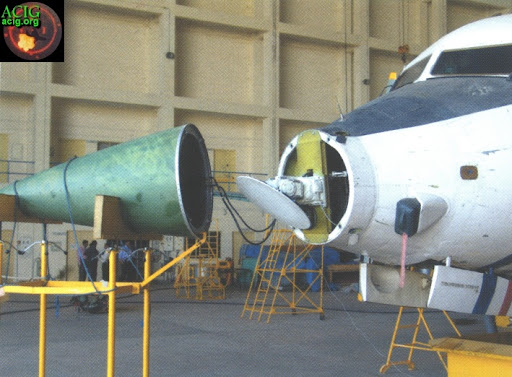

Old pics of MSA radar on Flying Test Bed (FTB) platform based on Hawker-Siddeley AVRO aircraft
AESA radars in principle have no such mechanically rotating elements. Some antenna’s do rotate a bit, but not to the extent of MSAs. Hence the clearance required is less. Look at the space between Uttam and Mk1s radome and compare that with that of Mk2

Uttam AESA integrated with Tejas Mk-1 for testing
Optimization #2 comes from fielding Uttam AESA in Mk1-prototypes. They measured all dispersion patterns in the field to calibrate their simulation systems. Now, they can confidently simulate the minimum clearance required for given nose geometry and radar signals.
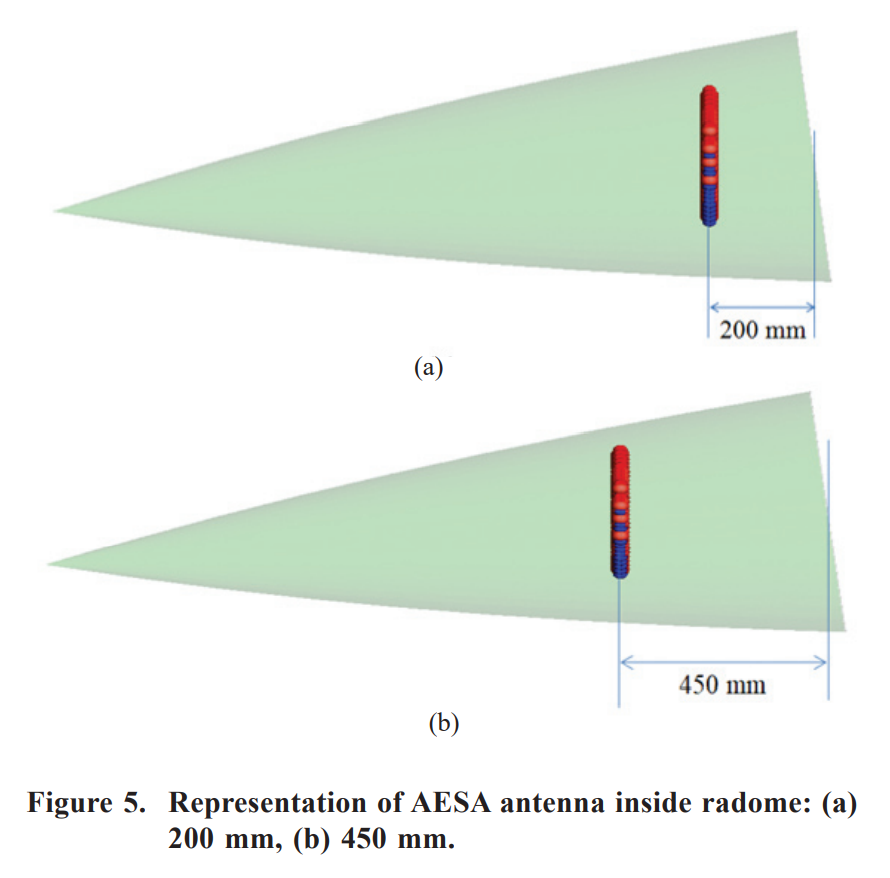

Finally, Optimization #3 comes from optimizing the radar itself. Their latest elements to be fielded in Mk2 are smaller and can be packed tighter, hence the diameter of the antenna itself is smaller even though it is more powerful!
Another improvement that is easy to miss is that Mk2 radome won’t have a pitot tube. Pitot tubes are critical to flying. Inaccurate readings from pitot tubes can lead to critical failures. They should be placed in clean airflow, What better place than the nosetip for that?
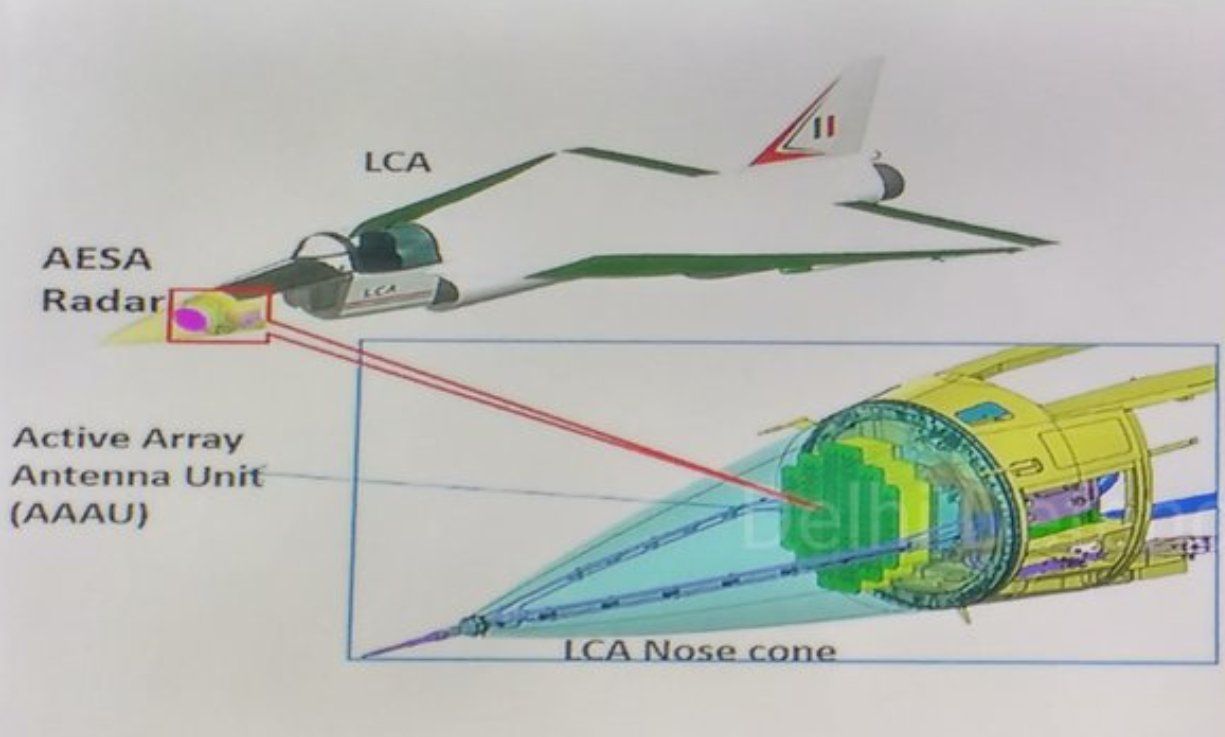
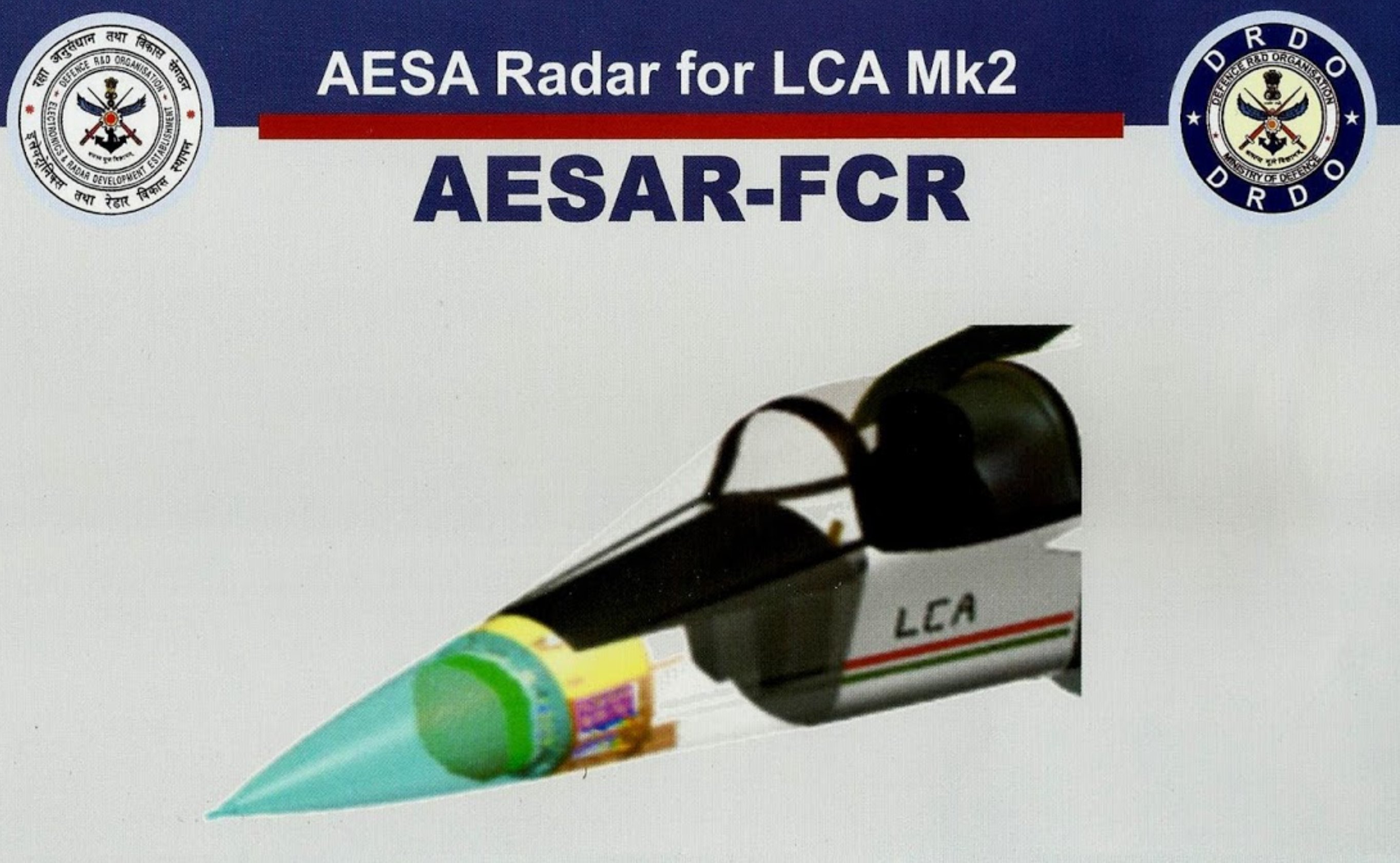
People do place them at wingtips etc, but there are some problems associated with doing so fighter aircrafts (keeping it short here). If you place a pitot tube anywhere on the fuselage, airflow around the body change the readings a little. For example, IFR probe creates asymmetry around the pitot tube on one side and it must be compensated for by the flight computer. These are relatively easy for ADA now on a proven platform and gained expertise. But in 1983, it had neither. Could it have taken a chance?
But a pitot tube at the nosetip means metallic wires & structures must go through the radome. This is detrimental to the radar’s performance! Mk2 does way with this loss in performance. Its FC is robust enough. This maturity couldn't have come without flying Mk1s for 1000s of hrs. And all these benefits are not limited to Tejas Mk2! They will apply to AMCA and TEDBF. In fact in the latter two, you might not see any external pitot tubes at all! Learn once apply as many times as needed. This is why DRDO is churning out missiles like hot cakes!
This is the beauty of crawl-walk-run (or build-test-refine) model. Every successful product to date is built on this philosophy. Sitting on hands, theorizing that some alternative setup or transfer of (hard-earned strategic) technology will magically solve your problem is naive. People are technology, technology is people. To build technology, one must first build the people who can build that technology. They must start somewhere. It takes time! It takes doing! There is nothing magical about it!
Sameer Joshi (CEO of NewSpace) replied:
Reproducing here:
LCA Mk2’s nose cone is smaller in length (~10%) and diameter (~10%) than Mk1s even though it will house a more powerful radar and internal IRST. In this thread, I want to show you how this is ONLY possible by build, learn, repeat. Instead of read (papers/brochures), think, repeat.

But first, what does a slimmer nose mean for a single-engine fighter aircraft? 10% reduction in diameter means 21% reduction in cross sectional area. Although this seems small, it has a large impact on aerodynamics. And it is not easy to achieve. More on that later. Narrow fuselages needs to displace less air to move through it. Hence, power-constrained SE fighters gain most from such optimizations. They can travel faster and sometimes even turn faster. Also, smaller radome means smaller weight which also translated to lesser drag. But as I said earlier achieving 10% reduction in nose diameter is no small achievement. It takes 3 huge steps which would not have been possible without going through the Tejas Mk1 and Mk1A design and operationalization cycle. Allow me to elaborate.
Optimization #1 comes from the basic design itself. Tejas Mk1 was designed for a mechanically scanned array (MSA) radar. Such radars have rotating antenna disks and radomes that must be large enough to provide sufficient internal clearance for the antenna disk to rotate.

Old pics of MSA radar on Flying Test Bed (FTB) platform based on Hawker-Siddeley AVRO aircraft
AESA radars in principle have no such mechanically rotating elements. Some antenna’s do rotate a bit, but not to the extent of MSAs. Hence the clearance required is less. Look at the space between Uttam and Mk1s radome and compare that with that of Mk2
Uttam AESA integrated with Tejas Mk-1 for testing
Optimization #2 comes from fielding Uttam AESA in Mk1-prototypes. They measured all dispersion patterns in the field to calibrate their simulation systems. Now, they can confidently simulate the minimum clearance required for given nose geometry and radar signals.


Finally, Optimization #3 comes from optimizing the radar itself. Their latest elements to be fielded in Mk2 are smaller and can be packed tighter, hence the diameter of the antenna itself is smaller even though it is more powerful!
Another improvement that is easy to miss is that Mk2 radome won’t have a pitot tube. Pitot tubes are critical to flying. Inaccurate readings from pitot tubes can lead to critical failures. They should be placed in clean airflow, What better place than the nosetip for that?


People do place them at wingtips etc, but there are some problems associated with doing so fighter aircrafts (keeping it short here). If you place a pitot tube anywhere on the fuselage, airflow around the body change the readings a little. For example, IFR probe creates asymmetry around the pitot tube on one side and it must be compensated for by the flight computer. These are relatively easy for ADA now on a proven platform and gained expertise. But in 1983, it had neither. Could it have taken a chance?
But a pitot tube at the nosetip means metallic wires & structures must go through the radome. This is detrimental to the radar’s performance! Mk2 does way with this loss in performance. Its FC is robust enough. This maturity couldn't have come without flying Mk1s for 1000s of hrs. And all these benefits are not limited to Tejas Mk2! They will apply to AMCA and TEDBF. In fact in the latter two, you might not see any external pitot tubes at all! Learn once apply as many times as needed. This is why DRDO is churning out missiles like hot cakes!
This is the beauty of crawl-walk-run (or build-test-refine) model. Every successful product to date is built on this philosophy. Sitting on hands, theorizing that some alternative setup or transfer of (hard-earned strategic) technology will magically solve your problem is naive. People are technology, technology is people. To build technology, one must first build the people who can build that technology. They must start somewhere. It takes time! It takes doing! There is nothing magical about it!
++++
Sameer Joshi (CEO of NewSpace) replied:
M
Manomed
Guest
We sent them to exileThey have been absent for a while from the forum (from what I can tell) after earlier spate of some activity with @Gamal @ANGMAR et al.
Let me tag @Philip the Arab for any summary on anything he may have heard from gomig and TheSC etc.
tejas mk 2 CDR confirmed:
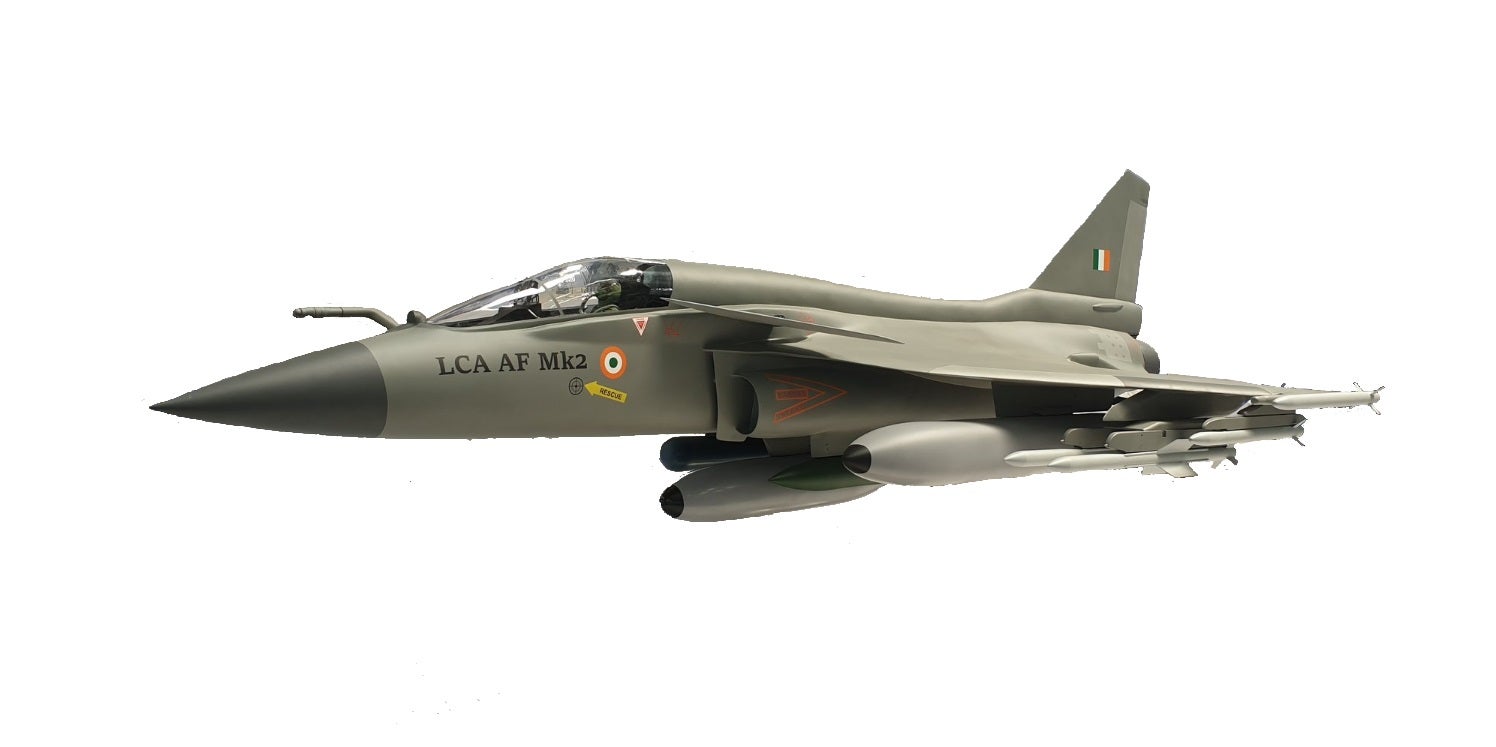
 www.airforce-technology.com
www.airforce-technology.com
@Indos

India’s LCA Tejas Mark 2 achieves CDR acceptance
India’s home grown light combat aircraft (LCA) Tejas Mark 2 has achieved a milestone with the Deputy Chief of Air Staff (DCAS) accepting its comprehensive design review (CDR).
@Indos
tejas mk 2 CDR confirmed:

India’s LCA Tejas Mark 2 achieves CDR acceptance
India’s home grown light combat aircraft (LCA) Tejas Mark 2 has achieved a milestone with the Deputy Chief of Air Staff (DCAS) accepting its comprehensive design review (CDR).www.airforce-technology.com
@Indos
What is the different between Tejas Mark 1 and Mark 2 beside the engine ( F414) ?
What is the different between Tejas Mark 1 and Mark 2 beside the engine ( F414) ?
Mk2 will basically be somewhat larger and have "medium" class category as compared to "light".






